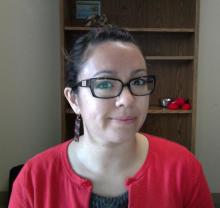Get Started
BIOL 211 Jorve Hoos Getting Started
For this assignment, you are required to:
-
read the Walther et al 2002 article (review)
-
find and read two additional primary peer reviewed articles from the scientific literature that include figures with temperature on the x-axis and some organismal response on the y-axis.
Link to in-class google slides: https://docs.google.com/presentation/d/1tJJvehr3pstquhYJSU-UatvhDhxcHGGKjIyE6oLdfLU/edit?usp=sharing
Tips on getting started:
-
Determine what species and performance you want to learn more about.
-
Read through the Walther article and locate some of the articles summarized by the authors
-
Do some searching on the open web (Google, Bing, etc) for climate change and effects on performance
-
-
Figure out your search terms:
-
"climate change" AND specific species latin name AND performance
-
-
Give yourself plenty of time!
-
You'll have to open/read through a lot of articles to find ones that include a graph that meets the assignment requirements. Begin searching now.
-
What's a "primary" research article?
| Primary Articles | Review Articles | |
|---|---|---|
| topic |
|
|
| authors |
|
|
| currency |
|
|
| reading level |
|
|
| use |
|
|
Finding Peer-Reviewed Journal Articles
BIOL 211 Jorve Hoos Finding Articles
The recommended databases for this assignment are:
You may also want to do some searching in another Biology database if you're not finding what you need.
Tips on Searching
| Tip | Examples |
| Select appropriate search terms |
Instead of "frog", search for a specific species: wood frog, Rana sylvatica Instead of "performance", search for a specific performance: fecundity, breeding date, survivorship |
| Use keywords, not long search phrases |
Instead of searching for "what are the effects of climate change on Rana sylvatica performance?", break down your search into the main keywords: climate change, wood frog, Rana sylvatica, fecundity |
| Use AND to combine different keywords | frog AND fecundity |
| Use OR to combine similar/related keywords | frog AND (fecundity OR fertility) |
| Use quotation marks (" ") to keep phrases together | "climate change" AND "Rana sylvatica" AND (fecundity OR fertility) |
| Look for ways to limit your search in the database | You can often limit by type of article (primary/empirical or review/secondary), year of publication, or searching only within the abstract/title |
| Start with the article provided by Dr. Jorve Hoos and look for related articles in the databases | Search for the Walther et al 2002 article within a database and see if there are any related articles. This is sometimes called Related Records or Related Articles. |
| Finding full text PDFs |
|
Citations
APA (General)
What is APA style?
APA stands for the American Psychological Association. It is the citation style used in most of the social sciences as well as some of the natural sciences.
Official APA Style Manual at CSUSM Library
This is the official APA manual published by the American Psychological Association. Though the 7th edition of the Publication Manual of the American Psychological Association was released in October 2019, we are currently providing information and links to the 6th edition. This is because the American Psychological Association expects students and professors to transition to this new edition in the spring of 2020 or thereafter. The CSUSM library is awaiting the delivery of the new guides and the transition of other reliable sources to the 7th edition before updating its own citation guide. If you are required to use the 7th edition prior to our updating our APA page, please go directly to the APA's Style and Grammar Guidelines website or contact a librarian directly for assistance.
- Library copies (BF76.7 P83 2010)
The CSUSM Library owns several copies of the official APA manual that you can consult in person. Click on the link above to see where they are located. - The official APA website
Need access to the official APA guidelines right now but can't get to a copy of the book? Try out their website. It has helpful FAQs and basic guidelines.
Helpful Online Guides
- A brief overview of APA Style
Produced by the APA. NOTE: HTML version of the tutorial works better. - CiteSource APA (Trinity College)
Examples accompanied by helpful screenshots and pictures showing you how to locate the information you need to include in your citation. - Purdue University's Online Writing Lab (OWL)
More examples of APA-style citations and paper formats from Purdue University's famous OWL website. Use the left-hand menu to find the category of item you are trying to cite.
What is a DOI?
APA style requires that you include a Digital Object Identifier (DOI) whenever you cite the online version of an article. A DOI is a special number that identifies each unique article in a database. Please note- some articles may not have a DOI.
To find the DOI, Ask a Librarian or check out the follwing tools:
- Guidance from the APA (read Online Scholarly Journal Article: Citing DOIs)
- Crossref.org (tool to locate a doi number)
- Tutorial video - using PsycINFO DB
Using APA for Special Cases
- Citing Business Sources (CSUSM Library)
A guide to the most common APA citation formats needed for business sources, compiled by the CSUSM Business Librarian and COBA faculty. - Citing Government Sources (University of Nebraska Kearney)
Guidance on how to cite many different kinds of government documents in APA style. - Legal Citations in APA Style (CSU Stanislaus)
Examples for the most commonly cited federal and California legal documents.- How do I make the § symbol in legal citations? See this guide by Microsoft for how to insert the § symbol using Microsoft Word. If you are using an Apple computer, you can also insert the symbol by typing Option+6.
More FAQs at the official APA website...
Sample Paper in APA Style
Sitewide guides menu
Talitha Matlin

760-750-4342
KEL 3423

